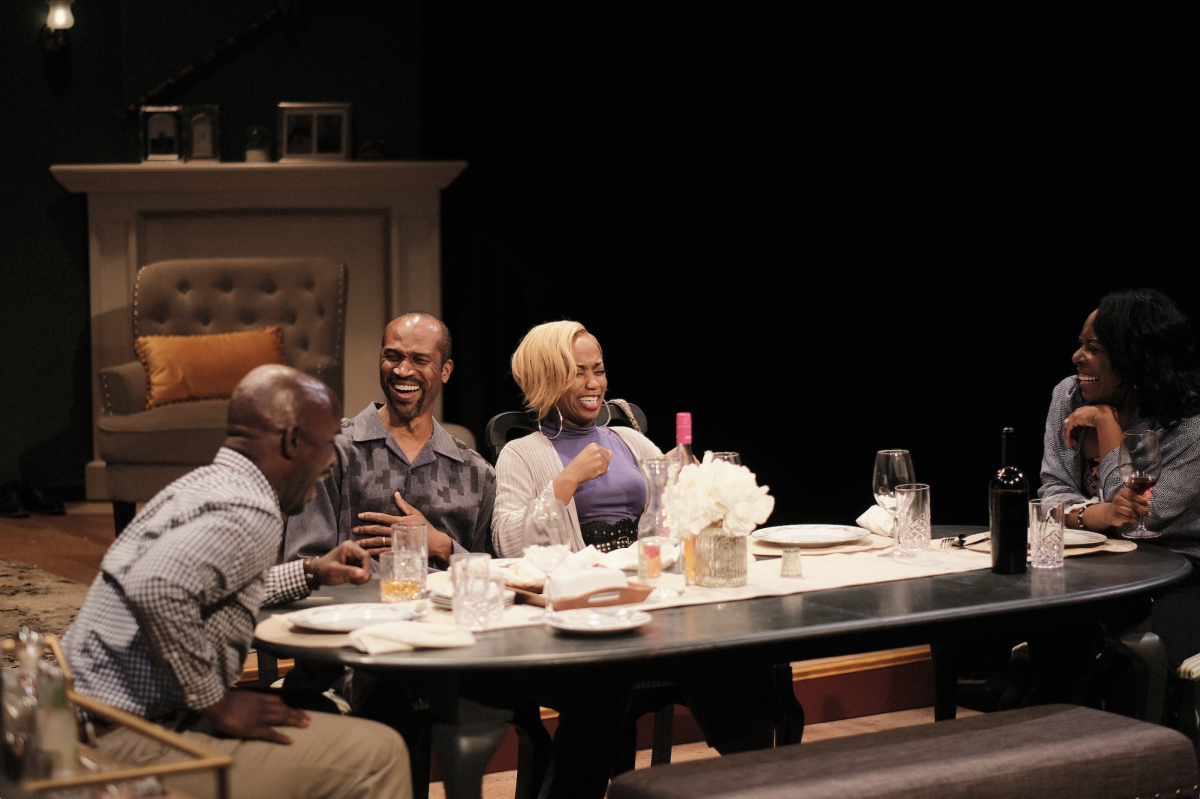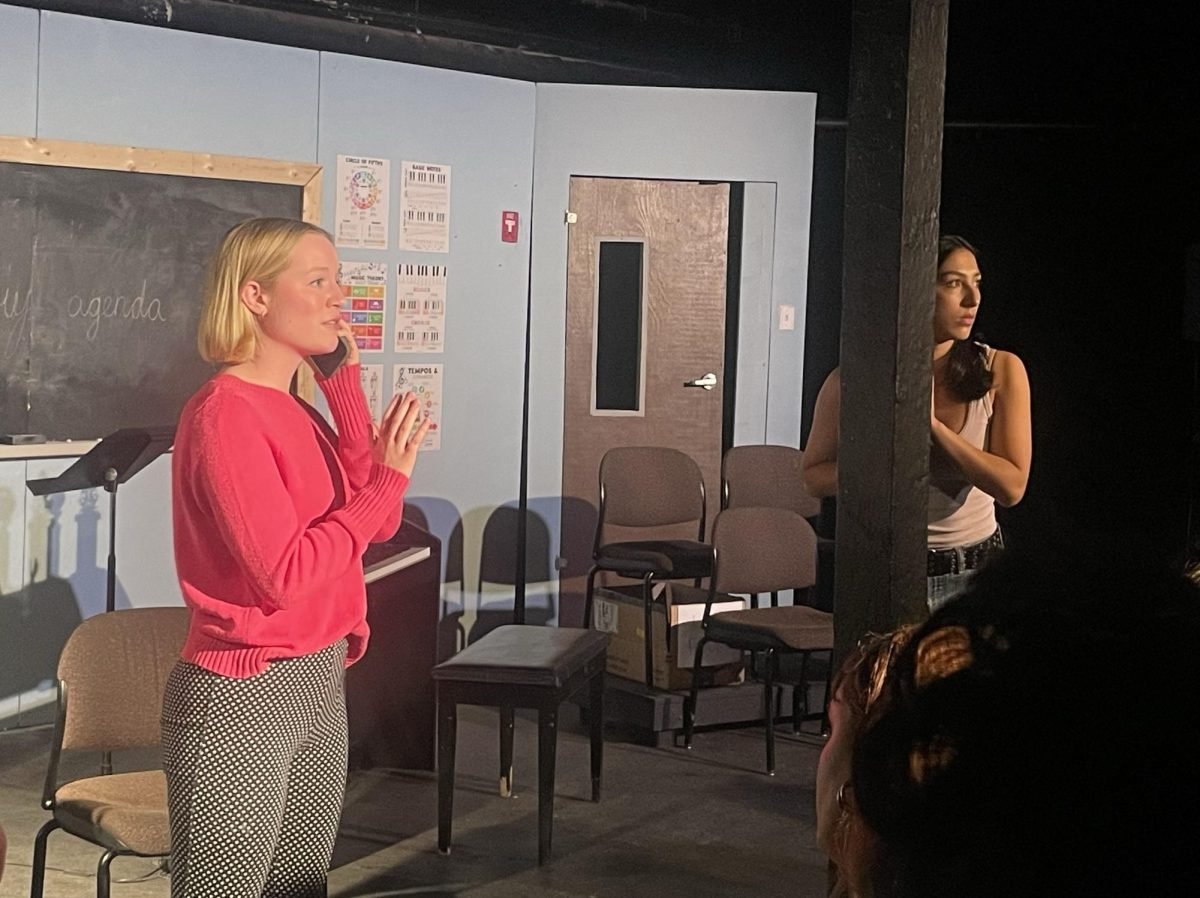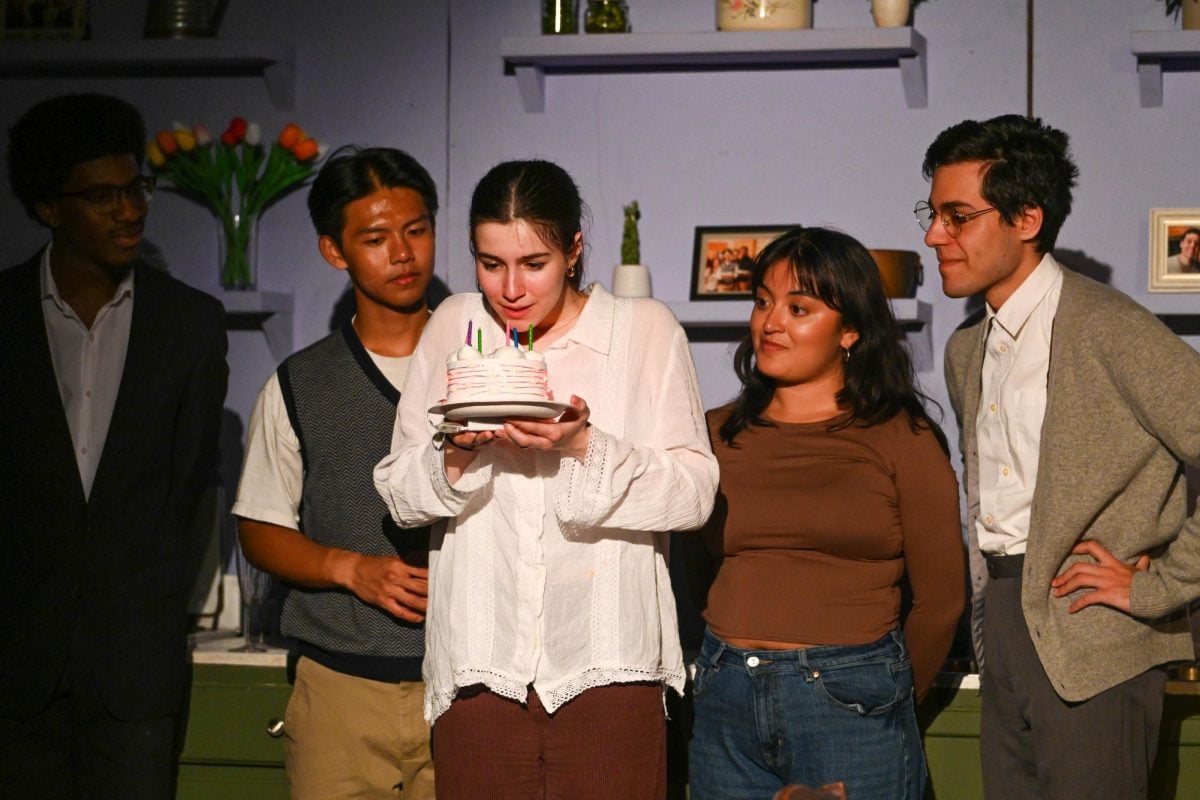A viewer’s introduction to the world of “Welcome to Matteson!” occurs long before an actor appears or the lights brighten the stage.
Instead, you are welcomed by the sound of music from various genres — contemporary R&B, disco, soul — warm lights above the audience and on the darkened stage, a well-decorated kitchen and living room. The dining area is closest to the audience.
You are left with the impression that you’ve arrived early to a party. And in a way, you have. In a few minutes, the house lights dim and you meet married couple Patricia (Sydney Charles) and Gerald Griffith (Ronald L. Conner), longtime residents of the Chicago suburb Matteson. They are preparing to host their new neighbors, Corey (Anthony L. Irons) and Regine Baker (Alexis J. Roston), who have recently been ousted from the Cabrini-Green government housing complex in the city.
What ensues is a spirited, humorous and, at times, hostile dinner that forces the Matteson residents to confront their preconceived notions of low-income Black communities and their pursuit of superficial happiness. Though Patricia and Gerald have built a life in which they are financially successful, they have neglected their emotional and personal needs in the process.
Playwright Inda Craig-Galván’s writing is sharp, weaving humor into serious themes of race and class. A Chicago native, her work examines the intricacies of racial politics, often featuring Black female protagonists. In “Welcome to Matteson!”, she pokes fun at arbitrary cultural differences between different socioeconomic groups. When Corey eagerly speaks of hosting a barbecue at their new lawn, Regine jokes, “These people over here [in Matteson] don’t barbecue. They grill.”
Patricia and Regine’s conversations throughout the night highlight this socioeconomic clash. Regine, well-versed in human psychology, does not hesitate to call out Patricia’s passive aggression and condescending remarks. Witty and observant, she seems to steer the course of the dinner conversation –– sometimes into ruin.
Gerald and Corey share friendlier moments. As the night progresses, they realize they are more similar than they thought, bonding over receiving the same golf caddie scholarship for disadvantaged youth. One might think of Gerald as the more favorable half of the couple, another victim of his wife’s close-minded nature.
However, by the end of the night, the lines are drawn between the two couples. Patricia reveals an unforgivable act she previously committed that reframes her behavior for the past few hours in a much more sinister light. And although Gerald is just as horrified as his guests, the trust between him and Corey is shattered.
The discussions of love and happiness complement the main themes of the show, bringing depth and complexity to the script and each character’s arc. Patricia and Gerald clash with the newcomers not only because of their class differences but also because of their envy. Corey and Regine’s healthy relationship holds a mirror to Patricia and Gerald’s lack of communication and affection.
Overall, the plot was well-executed and well-paced, a success for director Ericka Ratcliff. However, the ending was strangely abstract for a play otherwise grounded in reality. Corey and Regine stand on a platform at the corner of the stage, grinning while tending to a grill. In the house, Gerald suggests to Patricia that they forge a new path together. Holding a key toward the audience, they seemingly break the fourth wall, and the lights dim. The supernatural ending was more confusing than upsetting, and didn’t expand my understanding of the characters or the story. The sound acting from the cast, though, prevented the production from ending too cheesily.
“Welcome to Matteson!”, a Congo Square Theatre production, began its run Sept. 6 and will close on Oct. 1. The play is part of the National New Play Network’s Rolling World Premiere program, which works to develop an original play through various productions across the country.
Email: [email protected]
Twitter: @jahariia
Related Stories:
— In “Another Marriage,” unattractive moments are strengths
— ‘Are We Home Yet?’ combines comedy, theater, and music to explore immigrant experiences
— NU’s ‘How We Got On’ breathes in the joy of hip-hop in suburbia



















